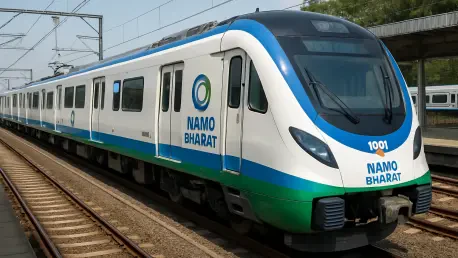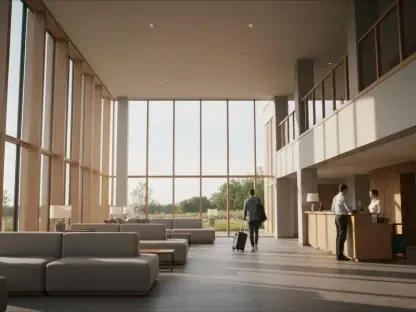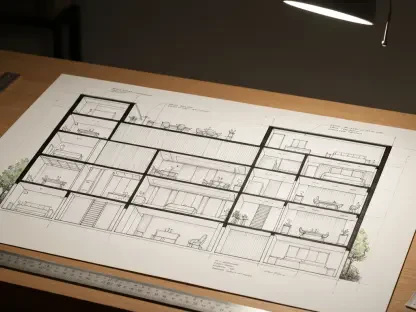Imagine a sprawling urban region where millions of commuters battle daily traffic snarls, spending hours navigating congested highways just to reach neighboring cities. In the National Capital Region (NCR) of India, this scenario is a harsh reality, with road networks buckling under the pressure of rapid urbanization, making efficient transit a critical need. Enter the Namo Bharat Train, a high-speed rail project poised to redefine regional transit by connecting key hubs like Gurugram, Faridabad, Noida, and Greater Noida. This market analysis explores how this ambitious initiative is set to reshape the transportation landscape, drive sustainability, and unlock economic potential in one of India’s most dynamic regions.
The purpose of this analysis is to dissect the market implications of this transformative rail system, evaluating its impact on commuter behavior, urban development, and environmental goals. By delving into current trends, data projections, and strategic insights, the focus is on understanding how this project aligns with broader infrastructure demands and sustainability targets. The significance lies in its potential to serve as a blueprint for other densely populated areas, offering a glimpse into the future of public transit markets in India.
Market Trends: Addressing NCR’s Transportation Challenges
The NCR, encompassing Delhi and its satellite cities, represents a critical economic engine for India, yet its transportation market has long been plagued by inefficiencies. Overburdened roads and inconsistent public transit options have driven a heavy reliance on private vehicles, contributing to severe air pollution and productivity losses. Market data indicates that daily commutes in the region often exceed two hours for distances under 50 kilometers, highlighting a pressing need for faster, more reliable alternatives.
Rapid urbanization continues to fuel demand for scalable transit solutions, with the region’s population projected to grow significantly over the next decade. Existing systems like the Delhi Metro, while impactful, fall short in seamlessly connecting peripheral economic hubs, creating a gap that affects both personal mobility and business logistics. The Namo Bharat Train emerges as a direct response to these market dynamics, targeting a 65-kilometer corridor to bridge urban centers and reduce dependency on road travel.
This trend toward high-speed regional rail reflects a broader shift in India’s infrastructure market, where government policies increasingly prioritize mass transit to curb congestion and emissions. Investor interest in such projects is rising, as public-private partnerships become a viable funding model. The market is ripe for innovation, with the Namo Bharat Train positioned to capitalize on this momentum by addressing both immediate commuter needs and long-term urban planning goals.
Data Insights: Connectivity and Economic Impacts
Quantitative analysis of the Namo Bharat Train project reveals its potential to transform the NCR’s mobility market. With an estimated cost of Rs 15,000 crores (approximately $1.8 billion USD), the initiative spans a strategic route from IFFCO Chowk in Gurugram to Surajpur in Greater Noida, incorporating key stops like Bata Chowk in Faridabad. Early projections suggest it will serve millions of passengers annually, slashing travel times by up to 50% compared to current road-based options.
Economically, the rail system is expected to stimulate growth by enhancing access to labor markets and commercial zones. Businesses in sectors like real estate and retail stand to benefit from increased footfall near stations, while logistics firms could see reduced delivery delays due to decongested highways. Market forecasts indicate a potential rise in property values along the corridor, signaling investor opportunities in urban development tied to transit hubs.
However, challenges such as high initial costs and the need for robust last-mile connectivity solutions could impact adoption rates. Data also points to varying demand across urban and suburban stations, necessitating tailored infrastructure investments. Despite these hurdles, the economic ripple effects of improved connectivity position the project as a catalyst for reshaping the NCR’s market landscape, driving both micro- and macro-level growth.
Sustainability as a Market Driver
A pivotal aspect of the Namo Bharat Train’s market appeal lies in its focus on sustainability, aligning with India’s national decarbonization objectives. The train’s energy-efficient design and electric propulsion system offer a stark contrast to the pollution-heavy reliance on private vehicles in the NCR. Market analysis shows that transportation accounts for a significant share of regional emissions, making green transit solutions a priority for policymakers and environmentally conscious commuters.
Comparative studies with global rail systems, such as Europe’s high-speed electric networks, suggest that such projects can cut carbon footprints by encouraging modal shifts from road to rail. Emerging trends in green technology, including potential solar integration, further enhance the train’s market positioning as a forward-thinking solution. This eco-friendly focus not only attracts government backing but also appeals to a growing segment of consumers prioritizing sustainable travel options.
Yet, the market faces risks, including high maintenance costs for advanced green technology and potential delays in scaling renewable energy infrastructure. Balancing affordability with environmental benefits will be key to maintaining competitive pricing in the transit market. Nonetheless, sustainability remains a powerful differentiator, likely influencing future investments in similar projects across India and strengthening the Namo Bharat Train’s market standing.
Future Projections: Shaping Regional Transit Markets
Looking ahead, the Namo Bharat Train signals a transformative trend in India’s regional transit market, with projections indicating a surge in demand for high-speed, sustainable rail networks. The project’s phased rollout, with the first phase expected to commence operations soon, could set benchmarks for integrating smart ticketing and AI-driven scheduling in future systems. Market analysts predict that successful implementation might spur network expansions, connecting additional NCR cities by 2027.
Economic indicators suggest increased infrastructure spending, supported by initiatives like Make in India, will fuel similar projects, creating a competitive market for rail technology and services. Regulatory shifts toward public-private collaborations are also expected to accelerate funding and scalability, potentially lowering entry barriers for private players. The train’s performance in its initial years will likely influence national transportation policies, shaping market expectations for urban mobility solutions.
Technological advancements are another factor driving future market growth, with innovations in energy efficiency and passenger management poised to redefine service delivery. If the Namo Bharat Train achieves projected ridership and emission reduction targets, it could inspire a wave of regional rail investments, positioning India as a leader in sustainable transit markets. The long-term outlook hinges on adaptability to these evolving trends and sustained government support.
Strategic Reflections and Market Recommendations
Reflecting on the analysis, it is evident that the Namo Bharat Train has positioned itself as a game-changer in the NCR’s transportation market, tackling chronic issues of congestion and pollution while unlocking economic opportunities. The project’s emphasis on connectivity has bridged urban divides, while its sustainability focus aligns with pressing environmental needs. Market data and projections underscore its potential to influence commuter behavior and spur regional growth, despite challenges like cost and infrastructure integration.
For stakeholders, the next steps involve strategic investments in last-mile connectivity, such as feeder buses or e-rickshaws at stations, to maximize ridership. Businesses are encouraged to explore commercial developments near transit hubs, capitalizing on increased accessibility. Policymakers need to prioritize funding mechanisms and regulatory frameworks that support green technology adoption, ensuring scalability. These actionable insights aim to sustain momentum, guiding the market toward a more connected and environmentally responsible future in urban transit.









